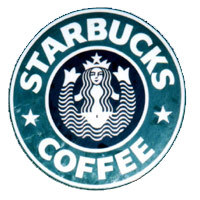Last week in my DES 001 class at UC Davis, Professor Housefield brought up three of the
BIG Questions of Design. In particular, the third question he posed to the class stuck in my mind:
Is design most important as an element of commerce or are there other ways to conceive of design?
My answer? Yes, there are definitely other ways to perceive design! Take crayons, for example. Originally, crayons were designed to be functional art tools. Over time, the brand name "Crayola" has become so popular that it is synonymous with the term "crayon," similarly to how "Kleenex" has come to be widely understood as another name for "tissue." Adults worked together to design crayons, a collection of wax drawing implements, that catered to the target market of young children with their bold colors and playful names.
While it is true that the crayon was developed as a purchasable commodity, I wonder if the people who designed these colorful wax sticks might have taken it a step too far. The clever names for the colors might be confusing to the children using them. For example, does a kindergartener understand what "Mauvelous" means? Or do they know that according to Crayola, the color "Inchworm" means bright green? The company developing this product took great measures to create the look of each color's individual paper wrapper so that they all look identical with different color names printed on the side, but the subjective color descriptions might make their design too complex for a toddler to fully grasp.
With this in mind, I wonder if the real designers in this crayon scenario are, in fact, the people who use the product to create their own works of art. Instead of using crayons to earn a profit, as the original designers did, children use crayons to draw pictures before they even learn how to write or read. And adults such as Pete Goldlust employ crayons as a medium for ornate sculptures [Check out
Pete Goldlust's website for some of his amazing crayon creations].
Then there are the people who are so enamored with the design of the crayon that they collect them. I remember in elementary school, we all compared our crayon sets to see who had the biggest set in their pencil box. Young children take pride in having more crayons than their peers. Other people collect the retired color crayons that are no longer being manufactured, which most likely cost more than they did in their original sets.
Admittedly, the people who are buying collector crayon items are feeding into the notion of design as an element of commerce. Perhaps the company designed their retirement of certain colors as a plan for the value of these crayons to go up so that people would spend more money for their products. But I think the more important message here is that people have come up with new ways to tailor the original design of the Crayola crayon to fit their own needs, whether it be drawing, sculpting, or collecting.




 But it only lasted a few years until 1992 when the current Starbucks logo was introduced. It is drastically different from the first one. Though it maintains its circular shape, almost everything else has been altered in favor of a more modern design. The siren has been reduced into black and white shapes and lines, giving her a flat, two-dimensional quality. Her face is zoomed in so that the rest of her body is cropped out of the circle, and her long hair covers her chest. Essentially everything that characterized her as a realistic human has been eliminated in favor of a graphic representation of her face and hair. The textual element was also greatly simplified, changing from Starbucks Coffee, Tea, and Spices to just Starbucks Coffee. Because there are less words, the letters got bigger and bolder to fill up the space around the circle.
But it only lasted a few years until 1992 when the current Starbucks logo was introduced. It is drastically different from the first one. Though it maintains its circular shape, almost everything else has been altered in favor of a more modern design. The siren has been reduced into black and white shapes and lines, giving her a flat, two-dimensional quality. Her face is zoomed in so that the rest of her body is cropped out of the circle, and her long hair covers her chest. Essentially everything that characterized her as a realistic human has been eliminated in favor of a graphic representation of her face and hair. The textual element was also greatly simplified, changing from Starbucks Coffee, Tea, and Spices to just Starbucks Coffee. Because there are less words, the letters got bigger and bolder to fill up the space around the circle.